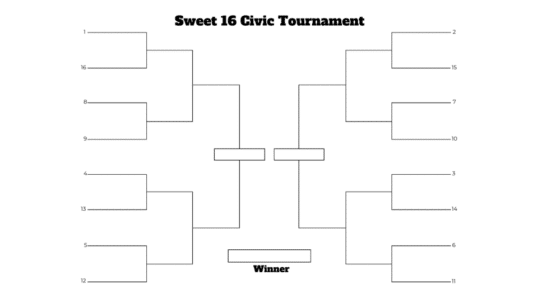Two previous installments in this practical tips series have attempted to glean wisdom from the facilitators who have led dozens of discussions on IF reports. We have looked at some of the issues involved in putting behinds in the seats and jump-starting conceptual discussion of the possibilities in our reports as key areas to focus on. Yet first-time facilitators of these reports are often uncertain about whether a discussion is going well and whether it has a “destination”.
There is probably no such thing as the “perfect” discussion, and I suspect that those who think they have had one may be a bit too smug and probably missed something. We discourage debate for debate’s sake, yet we understand that policy matters can generate passion and raised voices on occasion. We strive to focus at the conceptual level of general ideas and approaches, yet fully appreciate that citizens will resort to current events and concrete examples in order to “try on” possibilities. We endorse no particular agenda or policy, yet accept citizen desires to engage as a natural consequence of discussion.
Speaking for myself, I see a successful discussion as one where the participants develop a more robust appreciation of the subject matter of the report, use some or all of its possibilities as starting points for expanded discussion, and, perhaps, develop additional concepts not in the report. This does not mean that citizen participants need to “like” the report or share its perspectives. It does not mean that minds have “changed”, though hopefully they have “opened”. First-time facilitators sometimes worry too much about participant criticisms of possibilities and their presentation and worry that the discussion flow is not as it should be.
Here are some tips from our crack corps of practitioners who have encountered these issues:
- As long as the subject matter is being engaged primarily at the conceptual level, then your discussion is in the ballpark.
- If your participants are pre-occupied in implementation details or want to hijack the discussion to altogether different subject matter, then your discussion may have left the building and requires that you bring it back to where it can resume conceptual discussion. (Prompts like “how can we generalize from that specific example?” and “we need to get back the topic we agreed to discuss”)
- Acknowledge and note criticisms of report materials, but try to deflect the bulk of them until a wrap-up session and the post-discussion use of our survey.
- Make sure you do not over-facilitate to the point where you are leading discussion and cutting off exploration of novels ideas and responses.
- Encourage participants to frame possibilities in their own terms. (Prompts like “you seem to have an idea of a different way to summarize that possibility” or “you seem to see something in that idea that those who came up with it missed”)
- From beginning to end, let participants know that the discussion will end with a reflective wrap-up that calls upon their thinking side and their self-awareness side—insights flow not only from engaging ideas, but recognizing how discussion “felt”.
- Prepare them to engage the survey monkey tool and report candidly about their experience—it is not only a source of learning about how to improve our materials, it is a source of learning about what citizens want and need in discussions of policy.
One colleague of mine stated that discussion of IF possibilities are “almost facilitator-proof”, meaning that it was hard to mess up such discussions. The key word here is “almost”. The challenge may be to straddle that line between being overly directive of the discussions and letting them run away in some totally irrelevant direction. Common sense employed with a group of “play nice” discussion participants should keep you out of trouble.



